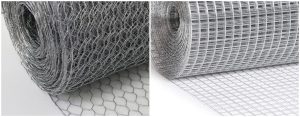Wire mesh is a versatile material widely used in various applications such as fencing, construction, agriculture, and industrial settings. It consists of intersecting wires, creating a grid pattern that provides strength, durability, and flexibility. To maximize the potential of wire mesh, different knots are employed to enhance its structural integrity and functionality. In this article, we will explore some of the most common knots used with wire mesh, discussing their characteristics, applications, and benefits.
Table of Contents
Overhand Knot:
The overhand knot is one of the simplest knots used in wire mesh applications. It is formed by simply passing one end of the wire over itself and pulling it through. While it may not provide significant strength, it is useful for securing loose ends or preventing unraveling.
Square Knot:
The square knot, also known as the reef knot, is a binding knot that joins two ends of wire mesh together. It is formed by crossing the ends over each other and then passing each end under the standing part of the wire mesh. This knot is commonly used in applications where a temporary or non-permanent connection is required, such as packaging, bundling wires, or creating quick repairs.
Sheet Bend Knot:
The sheet bend knot is specifically designed for joining two different types of wire mesh with varying thicknesses or materials. It is formed by creating a loop with one wire and passing the other wire through the loop, then wrapping it around both parts of the loop. This knot provides a reliable and secure connection, making it suitable for applications like netting, fishing, and crafting.
Figure Eight Knot:
The figure eight knot is known for its strength and stability. It is formed by creating a loop with the wire and passing the end through the loop, resembling the shape of the number eight. This knot is widely used in rock climbing, as well as in wire mesh applications that require strong and secure connections, such as suspending heavy objects or anchoring wire mesh panels.
Clove Hitch:
The clove hitch is a versatile knot used for attaching wire mesh to poles, posts, or other surfaces. It is formed by wrapping the wire around the object and crossing the ends over each other, then passing them under the opposite side of the wire mesh. This knot can be easily adjusted and untied, making it suitable for applications where frequent adjustments or repositioning are necessary.
Bowline Knot:
The bowline knot is a popular loop knot that forms a secure and fixed loop at the end of a wire mesh. It is created by forming a small loop, passing the end of the wire through the loop, around the standing part of the wire, and back down through the loop. The bowline knot is widely used in maritime applications, general rope work, and securing wire mesh to fixed points.
Double Fisherman’s Knot:
The double fisherman’s knot is a type of knot used to join two ends of wire mesh together, creating a strong and reliable connection. It is formed by tying two overhand knots in the ends of the wire mesh, then pulling them tight against each other. This knot is commonly used in activities such as fishing, camping, and crafting, where a secure and durable connection is required.
Hitches:
Hitches are knots used to attach wire mesh to a fixed object, such as a pole or a post. There are various types of hitches, including the timber hitch, the clove hitch, and the rolling hitch. These knots provide stability and strength by wrapping the wire mesh around the object and securing it with multiple turns and loops.
Conclusion
Wire mesh is a versatile material that can be enhanced by using different types of knots to meet specific application requirements. Whether it’s joining wire mesh panels, attaching them to fixed objects, or creating secure loops, the choice of knot plays a crucial role in ensuring the strength, durability, and functionality of the wire mesh structure. By understanding and employing the appropriate knots, one can maximize the potential of wire mesh in various industries and everyday applications.
